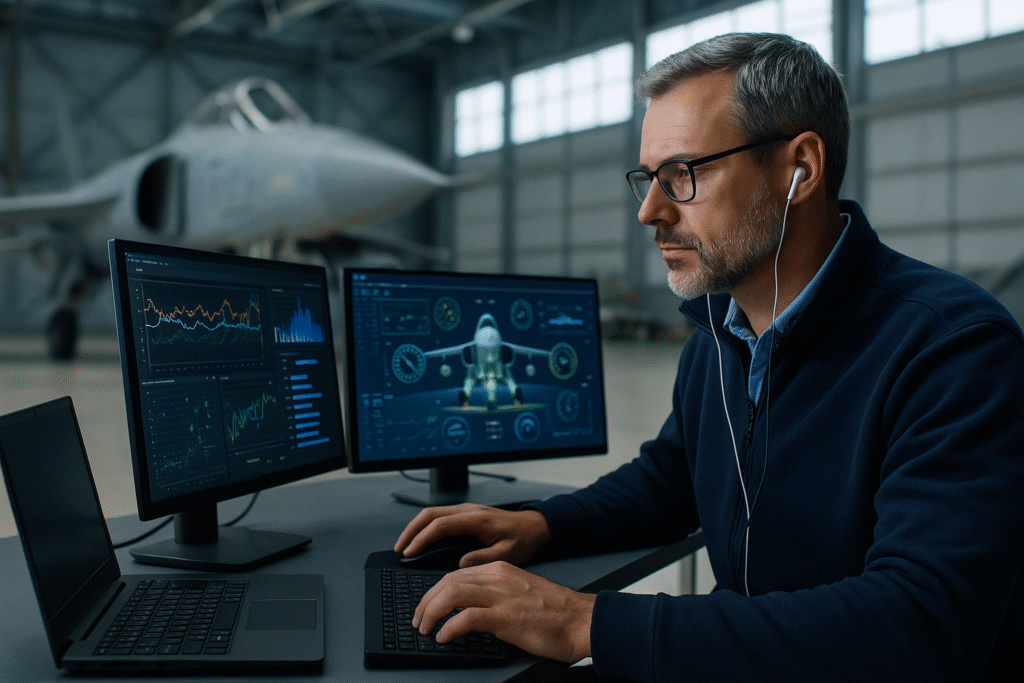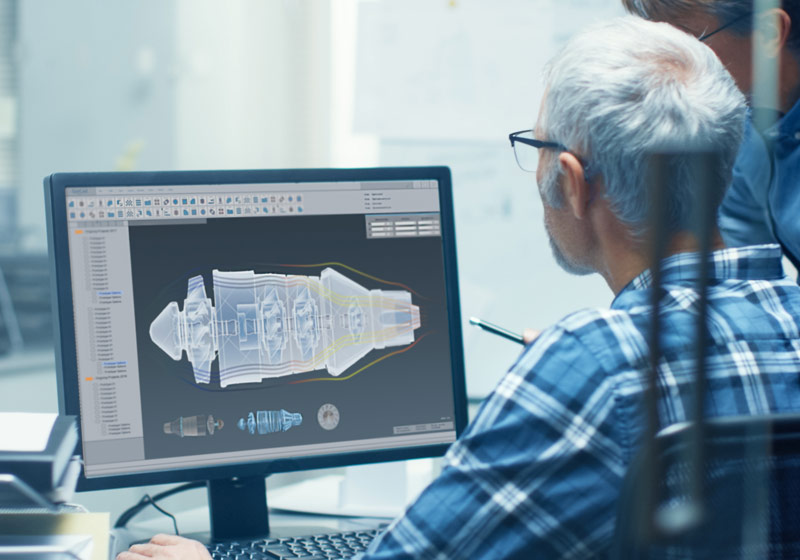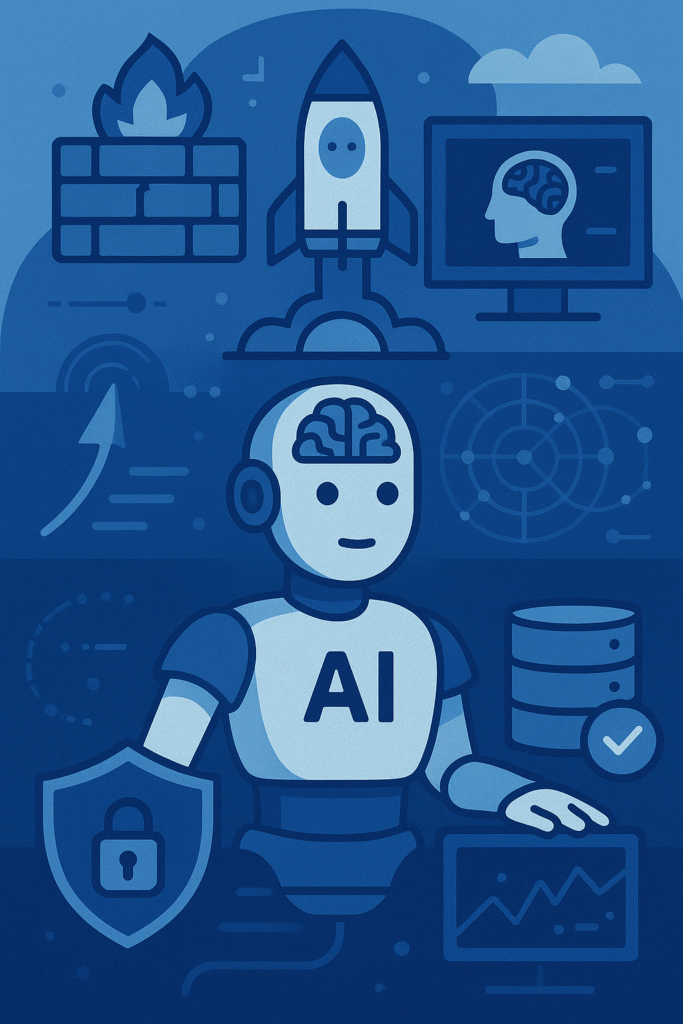How Custom GPTs Can Reduce Flight-Test Cycle Time by 40%
AI-Driven Solutions for Accelerated Aerospace Testing and Certification
Executive Summary
- 40% reduction in flight test cycle time through automated data processing and anomaly detection
- Real-time analysis of telemetry data enables faster decision-making and test iterations
- Automated reporting streamlines compliance documentation for FAA and DoD certification programs
- Predictive maintenance capabilities reduce unscheduled test delays and aircraft downtime
Reading Time: 8 minutes
The average flight test program for a new military aircraft costs between $500 million and $2 billion, with test cycles often extending 3-5 years before initial operational capability. Every day of delay represents millions in additional costs and potential mission capability gaps. Yet despite advanced instrumentation and data acquisition systems, flight test cycle time remains constrained by manual data analysis, report generation, and anomaly investigation processes that haven’t fundamentally changed in decades.
Custom GPTs are revolutionizing how aerospace and defense organizations approach flight testing by automating the most time-intensive aspects of test data analysis, anomaly detection, and regulatory reporting. Leading defense contractors are already seeing 40% reductions in overall test cycle times while improving test quality and safety margins.
The Current Flight Test Challenge: Manual Processes in a Digital Age
Modern flight test programs generate terabytes of data per test flight through hundreds of sensors measuring everything from engine performance parameters to structural loads and avionics behavior. However, the bottleneck isn’t data collection—it’s the human-intensive processes that follow each test flight.
Traditional Flight Test Workflow Limitations
A typical flight test data analysis workflow involves multiple manual steps that consume 60-80% of the total test cycle time:
- Data Validation and Quality Checks: Engineers manually review thousands of data channels for sensor malfunctions, calibration drift, and data integrity issues
- Performance Analysis: Test engineers compare actual performance against predicted models across multiple flight conditions and configurations
- Anomaly Investigation: Any unexpected behavior triggers time-intensive root cause analysis involving multiple engineering disciplines
- Report Generation: Compliance documentation for FAR Part 25, MIL-STD-810, or DO-178C requirements involves extensive manual report writing and data visualization
- Test Planning Updates: Each flight’s results inform modifications to subsequent test points, requiring manual analysis and planning updates
These manual processes create significant delays between flights, often extending what could be daily test operations into weekly cycles.
Custom GPT Solutions for Aerospace Testing Automation
Custom GPT aerospace applications leverage domain-specific training data and specialized prompts to automate critical flight test processes while maintaining the accuracy and rigor required for certification programs.
Automated Data Collection and Validation
Custom GPTs can process raw telemetry data in real-time, automatically identifying data quality issues and sensor anomalies that would traditionally require hours of manual review. By training on historical flight test datasets and known failure modes, these AI systems can:
- Detect sensor drift or calibration errors within seconds of data ingestion
- Identify missing data points or communication dropouts automatically
- Flag unusual parameter combinations that may indicate instrumentation problems
- Generate automated data quality reports with confidence intervals and uncertainty quantification
“Our Custom GPT implementation reduced our post-flight data validation time from 8 hours to 30 minutes, allowing us to move from a weekly to daily flight test cadence.” – Senior Flight Test Engineer, Major Defense Contractor
Intelligent Anomaly Detection and Analysis
Traditional anomaly detection relies on pre-programmed thresholds and human expertise to identify potential issues. Flight test automation through Custom GPTs enables sophisticated pattern recognition that can identify subtle anomalies that might be missed by conventional methods:
| Anomaly Type | Traditional Detection Time | Custom GPT Detection Time | Impact on Test Schedule |
|---|---|---|---|
| Engine Performance Degradation | 2-4 hours post-flight | Real-time during flight | Immediate test modification possible |
| Structural Load Anomalies | 4-8 hours analysis | 15 minutes post-flight | Same-day follow-up testing |
| Avionics System Interactions | 1-2 days analysis | 2 hours post-flight | Next-day test plan adjustment |
| Flight Control System Behavior | 6-12 hours analysis | 30 minutes post-flight | Same-day safety assessment |
Automated Reporting and Compliance Documentation
Regulatory compliance represents one of the most time-intensive aspects of flight testing, with programs often spending 40% of their budget on documentation and reporting requirements. Custom GPTs trained on regulatory standards can automatically generate compliance reports that meet FAA, EASA, and DoD requirements:
- FAR Part 25 Certification Reports: Automated generation of airworthiness compliance documentation with proper references to test data and analysis results
- MIL-STD-1797 Flying Qualities Reports: Standardized handling qualities assessments with pilot rating correlations and statistical analysis
- DO-178C Software Verification Reports: Automated documentation of software testing requirements and verification results
- DFARS 252.246-7007 Reporting: Automated generation of contractor flight and ground testing reports for DoD programs
Real-World Implementation: Case Studies in Aerospace AI
Case Study 1: Next-Generation Fighter Program
A major defense contractor implementing aerospace AI solutions for their next-generation fighter development program achieved remarkable results:
- Test Cycle Reduction: Flight test cycle time reduced from 14 days to 8 days between test points
- Data Processing Speed: Post-flight data analysis completed in 2 hours instead of 16 hours
- Anomaly Detection: 95% reduction in false positive anomaly alerts, improving focus on genuine issues
- Cost Savings: $50M reduction in overall test program costs through improved efficiency
Case Study 2: Commercial Aircraft Certification
An OEM developing a new commercial transport aircraft integrated Custom GPTs into their certification test program:
- Automated Flutter Testing: Real-time structural dynamics analysis during flight reduced flutter clearance timeline by 60%
- Performance Validation: Automated comparison of flight test results to certification predictions accelerated FAA approval process
- Maintenance Prediction: AI-driven analysis of test aircraft health reduced unscheduled maintenance by 75%
Implementation Strategy for Custom GPT Flight Test Solutions
Phase 1: Data Infrastructure and Integration
Successful aviation testing efficiency improvements through Custom GPTs require robust data infrastructure:
- Real-time Data Streaming: Implementation of high-bandwidth telemetry systems capable of streaming data to AI processing systems
- Data Lake Architecture: Centralized storage of historical flight test data for training Custom GPT models
- API Integration: Development of APIs connecting flight test data acquisition systems to Custom GPT processing engines
- Security and Compliance: Implementation of ITAR-compliant data handling with appropriate cybersecurity controls per NIST SP 800-171
Phase 2: Custom GPT Development and Training
Domain-specific training ensures Custom GPTs understand aerospace-specific terminology, standards, and analysis requirements:
- Historical Data Training: Training on 10+ years of flight test data across multiple aircraft programs
- Regulatory Knowledge: Integration of FAA, EASA, and DoD certification requirements and standards
- Failure Mode Libraries: Training on known failure modes, service difficulty reports, and accident investigation data
- Engineering Standards: Integration of company-specific analysis procedures and acceptance criteria
Phase 3: Deployment and Validation
Rigorous validation ensures Custom GPT recommendations meet the safety and accuracy requirements of flight testing:
- Parallel Validation: Running Custom GPT analysis alongside traditional methods to validate accuracy
- Subject Matter Expert Review: Human oversight and validation of AI-generated recommendations
- Continuous Learning: Regular model updates based on new flight test data and lessons learned
- Performance Metrics: Tracking of accuracy, false positive rates, and time savings metrics
Technical Architecture and Integration Considerations
System Requirements for Aerospace AI Implementation
Implementing defense flight testing automation requires specialized technical architecture:
Compute Infrastructure
- High-performance computing clusters with GPU acceleration for real-time analysis
- Edge computing capabilities for on-aircraft processing during flight
- Redundant systems ensuring 99.9% uptime during critical test phases
Data Management
- Petabyte-scale storage systems for historical and real-time data
- Data versioning and lineage tracking for regulatory compliance
- Automated backup and disaster recovery systems
Security and Compliance
- FIPS 140-2 Level 3 encryption for data at rest and in transit
- Multi-factor authentication and role-based access controls
- Audit logging and compliance monitoring per DoD standards
Integration with Existing Test Systems
Custom GPTs must integrate seamlessly with existing flight test infrastructure:
- Telemetry Systems: Direct integration with PCM decommutation systems and data acquisition hardware
- Analysis Software: API connectivity with MATLAB, LabVIEW, and specialized flight test analysis tools
- Reporting Systems: Automated export to existing document management and configuration control systems
- Test Management: Integration with program management tools for automated test planning updates
ROI Analysis: Quantifying the Business Impact
Direct Cost Savings
Organizations implementing Custom GPT solutions for aircraft certification testing typically see immediate cost reductions:
| Cost Category | Traditional Approach | With Custom GPT | Annual Savings |
|---|---|---|---|
| Data Analysis Labor | $2.5M annually | $800K annually | $1.7M |
| Report Generation | $1.2M annually | $300K annually | $900K |
| Test Aircraft Operations | $15M annually | $12M annually | $3M |
| Schedule Risk Mitigation | $5M contingency | $2M contingency | $3M |
Strategic Benefits Beyond Cost Reduction
The value proposition extends beyond immediate cost savings to strategic competitive advantages:
- Faster Time-to-Market: 6-12 month acceleration in program timelines provides significant competitive advantage
- Improved Safety Margins: Enhanced anomaly detection capabilities reduce flight test risks and potential accidents
- Regulatory Confidence: Automated compliance documentation improves certification authority confidence
- Knowledge Retention: AI systems capture and preserve institutional knowledge as experienced engineers retire
Overcoming Implementation Challenges
Cultural Adoption in Conservative Industry
The aerospace industry’s conservative approach to new technologies requires careful change management:
- Pilot Programs: Start with non-critical test programs to demonstrate value and build confidence
- Subject Matter Expert Involvement: Include senior flight test engineers in Custom GPT training and validation
- Transparent Decision-Making: Ensure AI recommendations include clear explanations and confidence levels
- Regulatory Engagement: Early engagement with certification authorities on AI tool validation approaches
Technical Integration Challenges
Legacy systems and data formats require careful planning for successful integration:
- Data Standardization: Implementation of common data formats across multiple test platforms
- Legacy System Interfaces: Development of APIs and data translators for older test systems
- Real-time Performance: Ensuring AI processing meets real-time requirements for in-flight decision support
- Scalability Planning: Architecture design supporting growth from single programs to enterprise-wide deployment
The Future of AI-Driven Flight Testing
Custom GPTs represent just the beginning of AI transformation in aerospace testing. Emerging capabilities include:
Predictive Test Planning
Future systems will use machine learning to optimize test sequences, predicting optimal test conditions and identifying the minimum number of flights required for certification.
Autonomous Test Execution
Integration with unmanned test aircraft will enable fully autonomous test execution with real-time decision-making and adaptive test planning.
Digital Twin Integration
Custom GPTs will serve as the intelligence layer connecting physical flight test data with digital twin simulations, enabling real-time model validation and updates.
Getting Started with Netray’s Custom GPT Solutions
Netray’s specialized Custom GPT service for aerospace and defense organizations provides rapid prototype development and deployment of AI-driven flight test solutions. Our approach includes:
Rapid Prototype Development
- 30-Day Proof of Concept: Rapid development of Custom GPT prototypes using your historical flight test data
- Domain Expert Collaboration: Direct access to aerospace engineers and AI specialists
- Regulatory Compliance: Built-in understanding of FAA, EASA, and DoD certification requirements
- Scalable Architecture: Cloud-native solutions that scale from single programs to enterprise deployment
Implementation Support
- Technical integration with existing flight test infrastructure
- Custom training on aerospace-specific datasets and requirements
- Change management support for organizational adoption
- Ongoing optimization and model updates
Conclusion: Transforming Flight Test Economics Through AI
The aerospace industry stands at an inflection point where traditional manual processes can no longer keep pace with the complexity and cost pressures of modern aircraft development. Custom GPTs offer a proven path to reducing flight test cycle time by 40% while improving accuracy and safety margins.
Organizations that embrace aerospace AI solutions now will gain significant competitive advantages through faster certification timelines, reduced development costs, and improved program risk management. The technology has matured beyond experimental applications to production-ready solutions that meet the rigorous safety and regulatory requirements of aerospace and defense programs.
The question facing aerospace executives isn’t whether AI will transform flight testing—it’s whether their organization will lead this transformation or struggle to catch up. With proven ROI exceeding 300% in the first year and strategic benefits extending far beyond cost reduction, Custom GPT implementation represents one of the highest-impact investments available to modern aerospace programs.
Ready to Accelerate Your Flight Test Program?
Contact Netray today to schedule a consultation and discover how Custom GPTs can transform your flight test operations. Our aerospace AI specialists will work with your team to develop a customized implementation roadmap and 30-day proof-of-concept demonstration.
Get started with a free flight test data analysis consultation.
Frequently Asked Questions
How long does it take to implement Custom GPT solutions for flight testing?
Netray’s rapid prototype approach delivers initial Custom GPT functionality within 30 days, with full production deployment typically completed in 3-6 months depending on integration complexity and organizational requirements.
What regulatory compliance considerations apply to AI in flight testing?
Custom GPT implementations must comply with DO-178C for software verification, RTCA DO-200B for processing standards, and maintain ITAR compliance for defense programs. Netray’s solutions include built-in compliance frameworks for major certification authorities.
How do Custom GPTs handle classified or ITAR-controlled flight test data?
Netray provides secure, on-premise Custom GPT deployments with FIPS 140-2 Level 3 encryption, multi-level security clearance support, and full data sovereignty control to meet the most stringent defense program requirements.
What ROI can organizations expect from Custom GPT flight test implementations?
Typical ROI exceeds 300% in the first year through reduced labor costs, accelerated test schedules, and improved program risk management. Large programs often see $5-10M annual savings while reducing certification timelines by 6-12 months.



